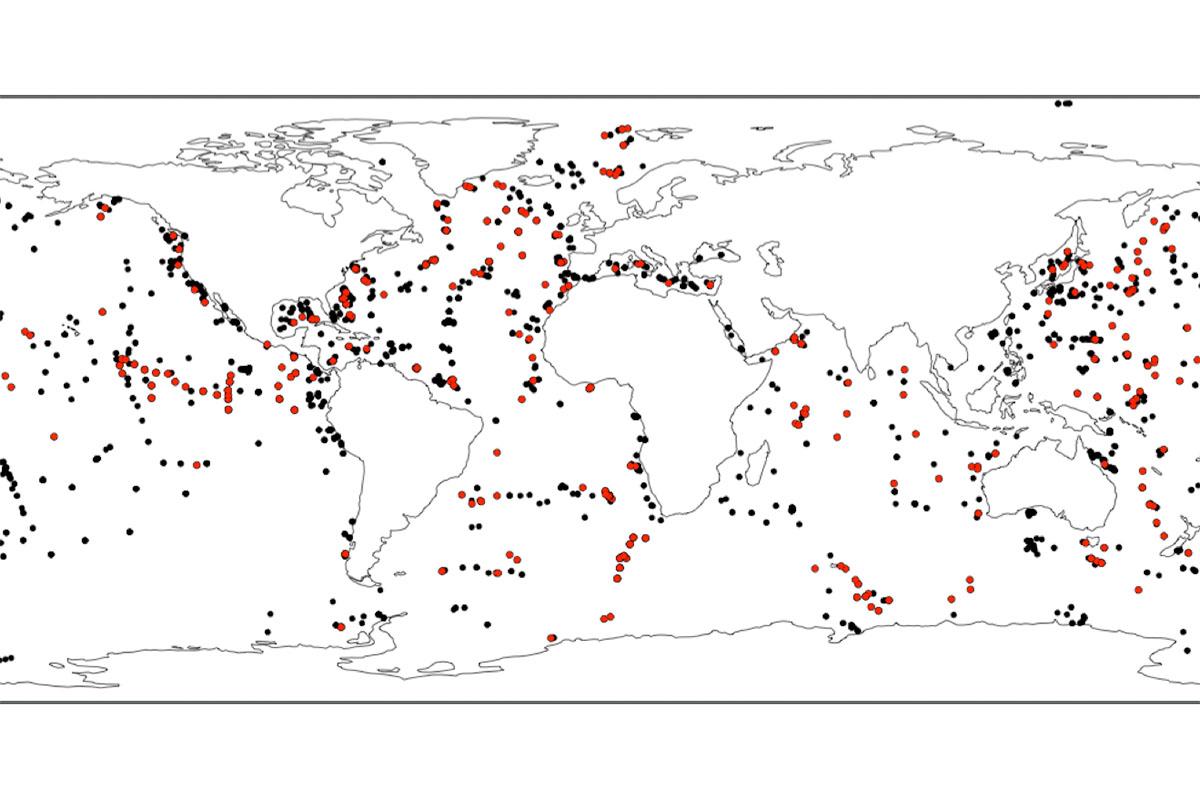NSB und PBDB sind die beiden größten Datenbanken im Bereich der Paläontologie, die Daten zum Vorkommen von Fossilien zusammentragen. PBDB deckt den phanerozoischen Bestand von Wirbellosen und Wirbeltieren ab, hat aber eine geringe Zeit- (c. 10 my) und taxonomische (artspezifische) Auflösung. Die NSB-Datenbank deckt ausschließlich marinen Plankton der letzten 100 my ab, hat jedoch eine weit größere zeitliche und taxonomische Auflösung. Zurzeit enthält NSB etwa 800.000 Vorkommensnachweise für etwa 10.000 Arten, mit einer durchschnittlichen Altersauflösung von 300.000 Jahren. Die NSB-Datenbank wird, ebenso wie die PBDB; für paläobiologische Studien verwendet. NSB ist darüberhinaus aber einzigarig, weil es auch detaillierte geochronische Angaben zu bestimmten Schnitten und biostratographischen Leitfossilien enthält und so auch von Paläozeanographen und anderen Geowissenschaftlern genutzt werden kann. Insgesamt wird das System in fast 100 Publikationen erwähnt und genutzt. Im Übrigen sind die taxonomischen Namenslisten mit anderen taxonomischen Plankton-Datenbanken verlinkt. NSB liefert die Quellnamen zur Aktualisierung des World Registry of Marine Species list of Polycystina (Radiolaria) und ist mit der Hauptwebsite der Mikropaläontologiecommunity-Website und dem taxonomischen Online-Katalog Mikrotax verlinkt.
Die NSB wurde über 20 Jahre lang an verschiedenen Forschungseinrichtungen entwickelt und erhielt Fördergelder von nationalen Forschungsträgern, der Europäischen Gemeinschaft und CEES Oslo. Ihre gegenwärtige Umsetzung ist im Wesentlichen Johan Renaudie und Patrick Diver (USA) zu verdanken und wird vom MfN unterhalten und erhält Unterstützung von der Wissenschaftscommunity für taxonomische und geochronologische Inhalte (insbesondere von Jeremy Young, UCL, London und Brian Huber, Smithsonian, USA).
Mehr Informationen über NSB
Kooperationspartner
- Patrick Diver, Divdat Consulting, Wesley, Arkansas, USA
- Jeremy Young, UCL, London, UK
- Brian Huber, Smithsonian, Washington, D.C., USA
Zehn ausgewählte Publikationen, die auf die Neptune Datenbank zurückgriffen (ohne eigene Publikationen)
- Allen, A.P., and Gillooly, J.F., 2006, Assessing latitudinal gradients in speciation rates and biodiversity at the global scale: Ecology Letters, v. 9, p. 947–954.
- Liow, L.H., and Stenseth, N.C., 2007, The rise and fall of species: implications for macroevolutionary and macroecological studies: Proc. Royal Society B, v. 274, p. 2745–2752.
- Muttoni, G., and Kent, D.V., 2007, Widespread formation of cherts during the early Eocene climatic optimum: Palaeogeography, Palaeoclimatology, Palaeoecology, v. 253, p. 348–362.
- Finkel, Z.V., Sebbo, J., Feist-Burkhardt, S., Irwin, A.J., Katz, M.E., Schofield, O., Young, J., and Falkowski, P.G., 2007, A universal driver of macroevolutionary change in the size of marine phytoplankton over the Cenozoic: Proceedings of the National Academy of Sciences of the United States of America, v. 104, p. 20416–20420.
- Rabosky, D.L., and Sorhannus, U., 2009, Diversity dynamics of marine planktonic diatoms across the Cenozoic: Nature, v. 247, p. 183–187.
- Cermeño, P., and Falkowski, P.G., 2009, Controls on diatom biogeography in the ocean: Science, v. 325, p. 1539–1541.
- Cermeño, P., Castro-Bugallo, A., and Vallina, S.M., 2013, Diversification patterns of planktic foraminifera in the fossil record: Marine Micropalaeontology, v. 104, p. 38–43.
- Fenton, I.S., Pearson, P.N., Jones, T.D., Farnsworth, A., Lunt, D., Markwick, P.J., and Purvis, A., 2016, The impact of Cenozoic cooling on assemblage diversity in planktonic foraminifera: Phil. Trans. R. Soc. B (web).
- Powell, M.G., and Glazier, D.S., 2017, Asymmetric geographic range expansion explains the latitudinal diversity gradients of four major taxa of marine plankton: Paleobiology, 1–13 (web).
- Hannisdal, B., Haaga, K.A., Reitan, T., Diego, D., and Liow, L.H., 2017, Common species link global ecosystems to climate change: dynamical evidence in the planktonic fossil record: Proc. R. Society B., v. 284, p. 1–9 (web).
Neuere Forschungsartikel von unserer Gruppe mit Rückgriff auf NSB
- Lazarus, D., Barron, J., Renaudie, J., Diver, P., and Türke, A., 2014, Cenozoic diatom diversity and correlation to climate change: PLOS One, v. 9, p. 1–18.
- Renaudie, J., 2016, Quantifying the Cenozoic marine diatom deposition history: links to the C and Si cycles: Biogeosciences, v. 13, p. 6003–6014.
- Wiese, R., Renuadie, J., and Lazarus, D., 2016, Testing the accuracy of genus-level data to predict species diversity in Cenozoic marine diatoms: Geology, v. 44
Artikel mit einer Beschreibung des NSB/Neptune-Systems, Methodenpapiere oder allgemeine Besprechungen paläobiologischer Forschung unter Heranziehung der Datenbank
- Lazarus, D.B., 1992, Age Depth Plot and Age Maker: age depth modelling on the Macintosh series of computers: Geobyte, v. 7, p. 7–13.
- Lazarus, D.B., 1994, The Neptune Project - a marine micropaleontology database: Math. Geol., v. 26, p. 817–832.
- Lazarus, D.B., Spencer-Cervato, C., Pianka-Biolzi, M., Beckmann, J.P., von Salis, K., Hilbrecht, H., and Thierstein, H.R., 1995, Revised chronology of Neogene DSDP holes from the world ocean: College Station, Ocean Drilling Program, v. 24, ca. 250 p. (also available here)
- Spencer-Cervato, C., 1999, The Cenozoic deep sea microfossil record: explorations of the DSDP/ODP sample set using the Neptune database: Palaeontologica Electronica, v. 2, p. web.
- Bohling, G., 2005, Chronos Age-Depth Plot: A Java application for stratigraphic data analysis: Geosphere, v. 1, p. 78–84.
- Fils, D., Cervato, C., Reed, J., Diver, P., Tang, X., Bohling, G., and Greer, D., 2009, CHRONOS architecture: Experiences with an open-source services-oriented architecture for geoinformatics: Comp. Geosci., v. 35, p. 774–782.
- Lazarus, D., 2011, The deep-sea microfossil record of macroevolutionary change in plankton and its study, in Smith, A., and McGowan, A., ed., Comparing the Geological and Fossil Records: Implications for Biodiversity Studies: London, The Geological Society, p. 141–166.
- Lazarus, D., Weinkauf, M., and Diver, P., 2012, Pacman profiling: a simple procedure to identify stratigraphic outliers in high density deep-sea microfossil data: Paleobiology, v. 38, p. 144–161.
- Renaudie, J., Diver, P., and Lazarus, D., 2015, Neptune NSB: a new, expanded and improved database of marine planktonic microfossil data: Geological Society of America, Abstracts with Programs, v. 47, p. 130.
- Yasuhara, M., Tittensor, D.P., Hellebrand, H., and Worm, B., 2017, Combining marine macroecology and palaeoecology in understanding biodiversity: microfossils as a model: Biological Reviews, 92:199-215.
